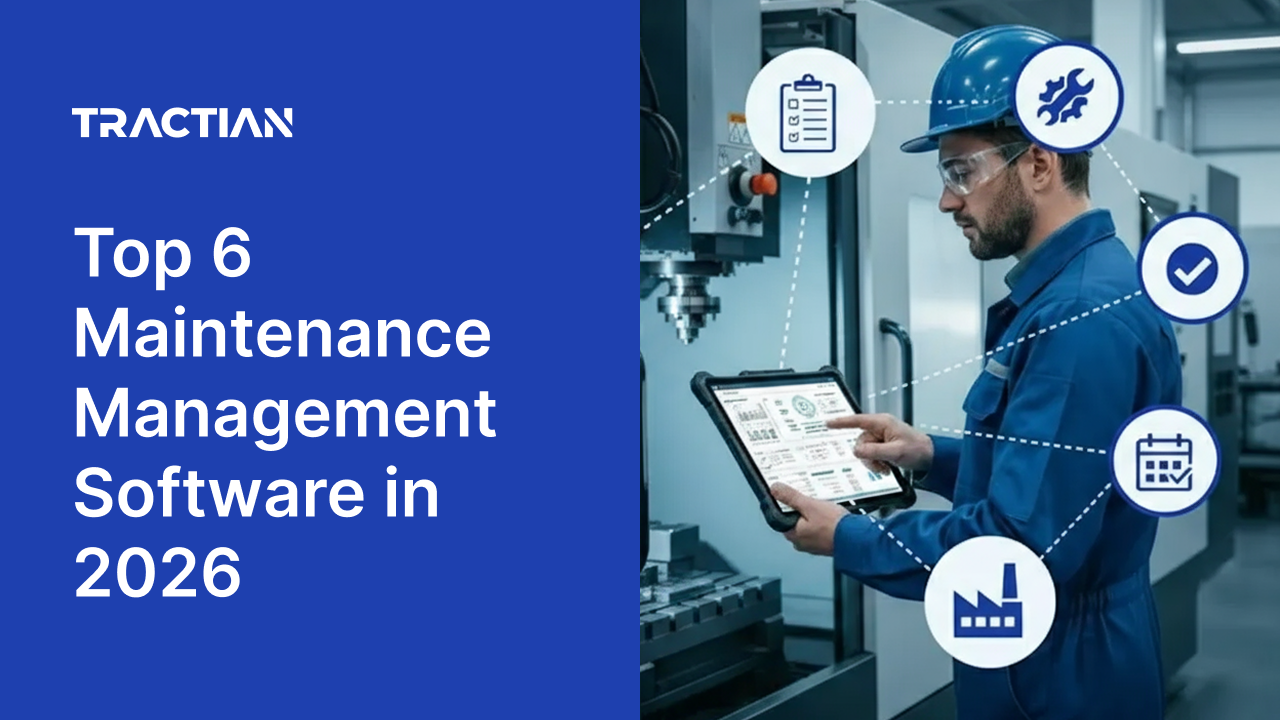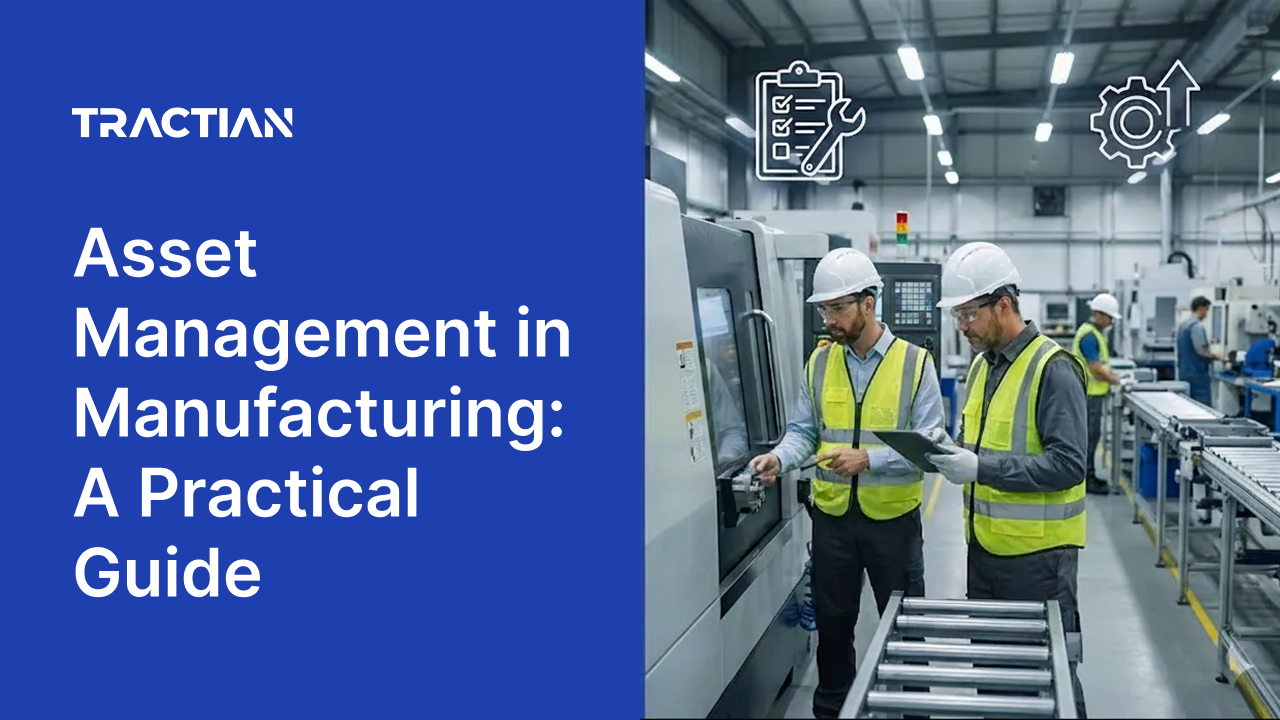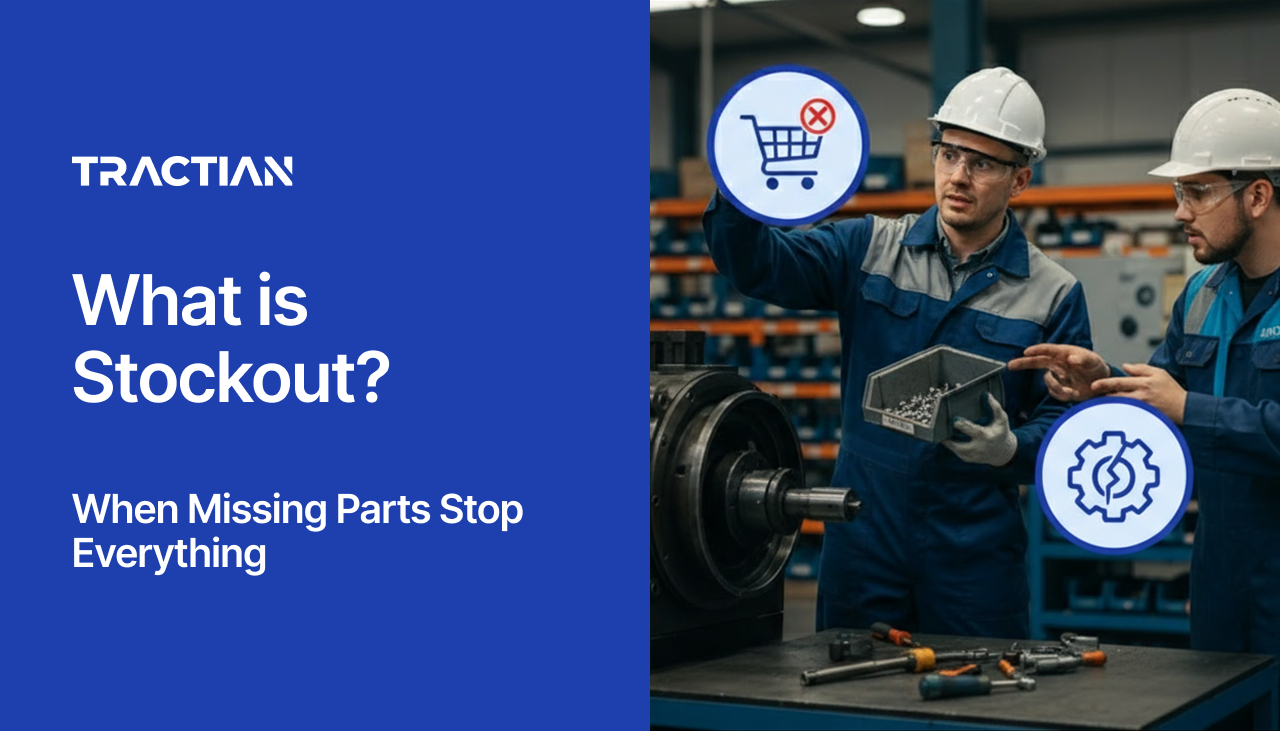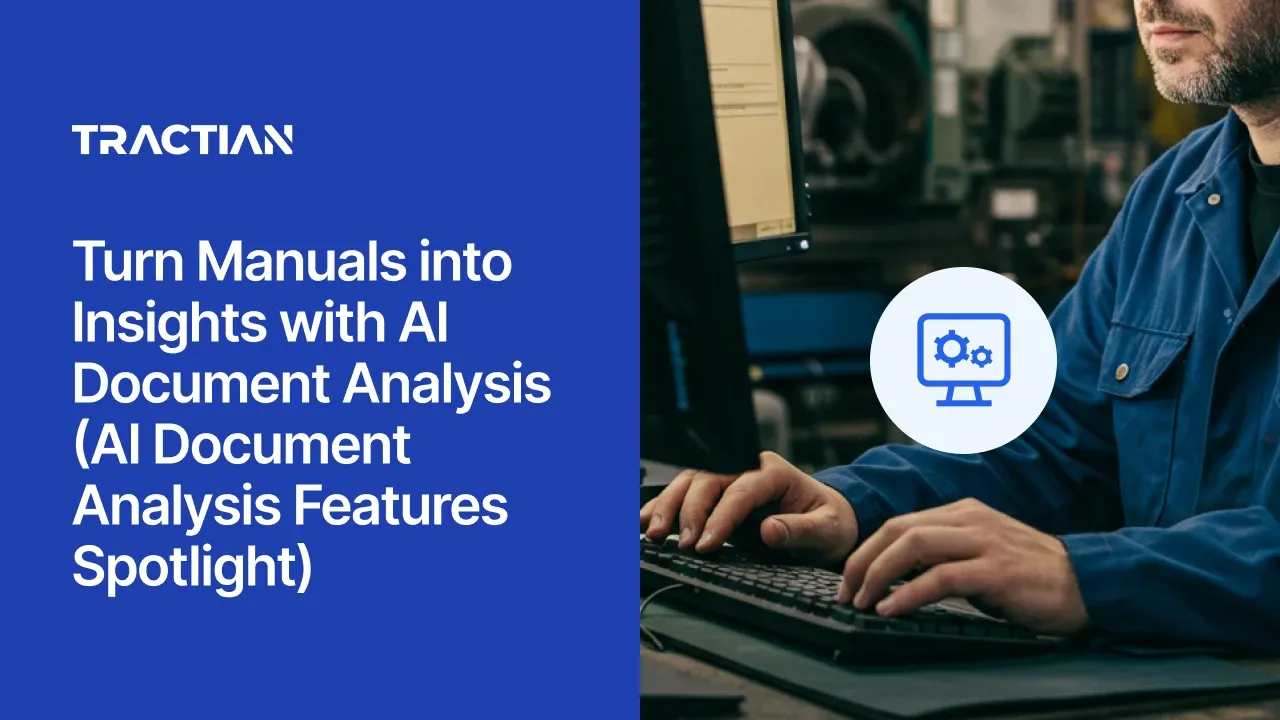
G2 Winter 2026 Reports: Tractian Sets the Standard for Asset Management & Industrial IoT
Tractian set the standard in G2's Winter 2026 Reports and continues to lead the way in connecting machine health, maintenance execution, and asset management in a single, seamless experience.
Keep readingLatest Articles

Best Maintenance Reporting Software for Manufacturing: Top 5 in 2026
Compare top maintenance reporting software with AI-powered analytics, real-time KPIs, and predictive insights natively integrated with condition-monitoring sensors.
Billy Cassano

Top 6 Maintenance Management Software in 2026
Compare the best maintenance management software for industrial teams in 2026. Learn about features, capabilities, notable downsides, and industry fit.
Geraldo Signorini

Asset Management in Manufacturing Industry: A Practical Guide for 2026
Discover the five best asset management strategies for manufacturing, including predictive maintenance, CMMS, lifecycle management, real-time monitoring, and digital twins.
Billy Cassano

What Is Total Acid Number (TAN)?
When Oil Becomes the Enemy A maintenance manager reviews the monthly performance report and notices a troubling pattern. Three bearing failures in the last quarter, all on equipment with recent oil changes. Seals were replaced twice on hydraulic systems that passed visual inspection the week before. A gearbox rebuild that wasn't scheduled for another year. The oil looked clean in every case. Filters showed normal pressure drop. The calendar said everything was on track. It turns out the proble
Billy Cassano

MTTF Made Simple: Predict Failures and Prevent Downtime
Learn how to calculate and apply MTTF to reduce failures, optimize inventory, and make data-driven replacement decisions with Tractian CMMS.
Michael Smith

What is Defect Density?
Monitoring Quality Rates in Manufacturing Defect density measures the count of defects relative to a defined inspection basis, enabling apples-to-apples visibility across products, lines, and processes. A shift lead walks the morning start‑up. Scrap bins appear normal, yet the first-pass yield has slipped overnight, and customer holds are climbing. On Line 2, the same hairline scratch shows up on otherwise good parts. Quality flags the pattern, maintenance checks the usual culprits, and produc
Billy Cassano

What is OOE?
The Complete Performance Metric A gap exists in traditional metrics between equipment effectiveness during production and efficiency during planned maintenance windows. A complete picture of how well assets deliver value across every available hour remains invisible without OEE. A maintenance manager reviews the monthly dashboard. Equipment availability is up 3%. Quality metrics are green. Maintenance costs are under budget. Yet production output dropped 8%, customer complaints increased, and
Billy Cassano

What Is Stockout?
When Missing Parts Stop Everything Missing parts create a cascade that disrupts entire operations, turning routine maintenance into emergency firefighting while costs multiply and schedules collapse. The call comes at 2 AM. A critical pump bearing has failed on Line 3, bringing production to a halt. The technician knows exactly what's needed, and it's a standard bearing that should be sitting in Bin 4-C-12. But when they scan the QR code, the storeroom system shows zero on hand. The backup loc
Billy Cassano

Turn Manuals into Insights with AI Document Analysis (AI Document Analysis Features Spotlight)
Your plant runs on pages. When those pages live in binders and shared drives, every repair starts with a search party. AI Document Analysis puts the exact step and diagram in a tech’s hand, converting search time to recovery and production. Static manuals and scattered PDFs slow repairs and make consistency fragile. Maintenance teams consistently lose time hunting for the right page, only to find conflicting versions or notes that never made it back into the file. But leading plants and manager
Billy Cassano

Boost Wrench Time with AI SOPs: Faster Fixes, Fewer Delays
Wrench time is where reliability is won. AI SOPs put the right steps in a technician’s hands at the moment of work, so fixes start sooner and finish right. On most floors, procedures live in too many places and change without a clear trail. Static or scattered SOPs drift between shifts, approvals sit in inboxes, and the real method survives as tribal know-how. That is when stop-and-ask moments multiply, handoffs slow, and the backlog grows. The cost isn’t only the delay. It is a steady loss of
Billy Cassano

Why Pay More for the Same Wrench? Tractian Beats Top CMMS Providers by 15%
Every CMMS promises the same basics: work orders, mobile app, preventive maintenance, parts management, and now AI. Those are the table stakes. If the core functionalities are nearly identical, why would you pay a higher price? The truth is that most platforms charge a premium for features that should be the standard. Predictive insights, multi-site visibility, and customization aren’t extras anymore, they’re requirements for keeping modern facilities running. And yet, many maintenance teams ar
Billy Cassano

Get Every Repair Right with AI SOPs + Document Analysis
Improve first-time fix rate maintenance by giving every technician the exact, approved steps for each asset, ensuring accuracy, consistency, and quality in repair execution. Leaders track first-time fix rate maintenance because it determines how often a problem is solved on the first visit, without callbacks or rework. Every repeat visit compounds downtime, increases labor and parts costs, and exposes quality declines that can ripple through the production process. Audit stress increases when i
Billy Cassano
Comprehensive free materials for your maintenance and reliability
Get free access to materials for increased productivity and an optimized maintenance routine.